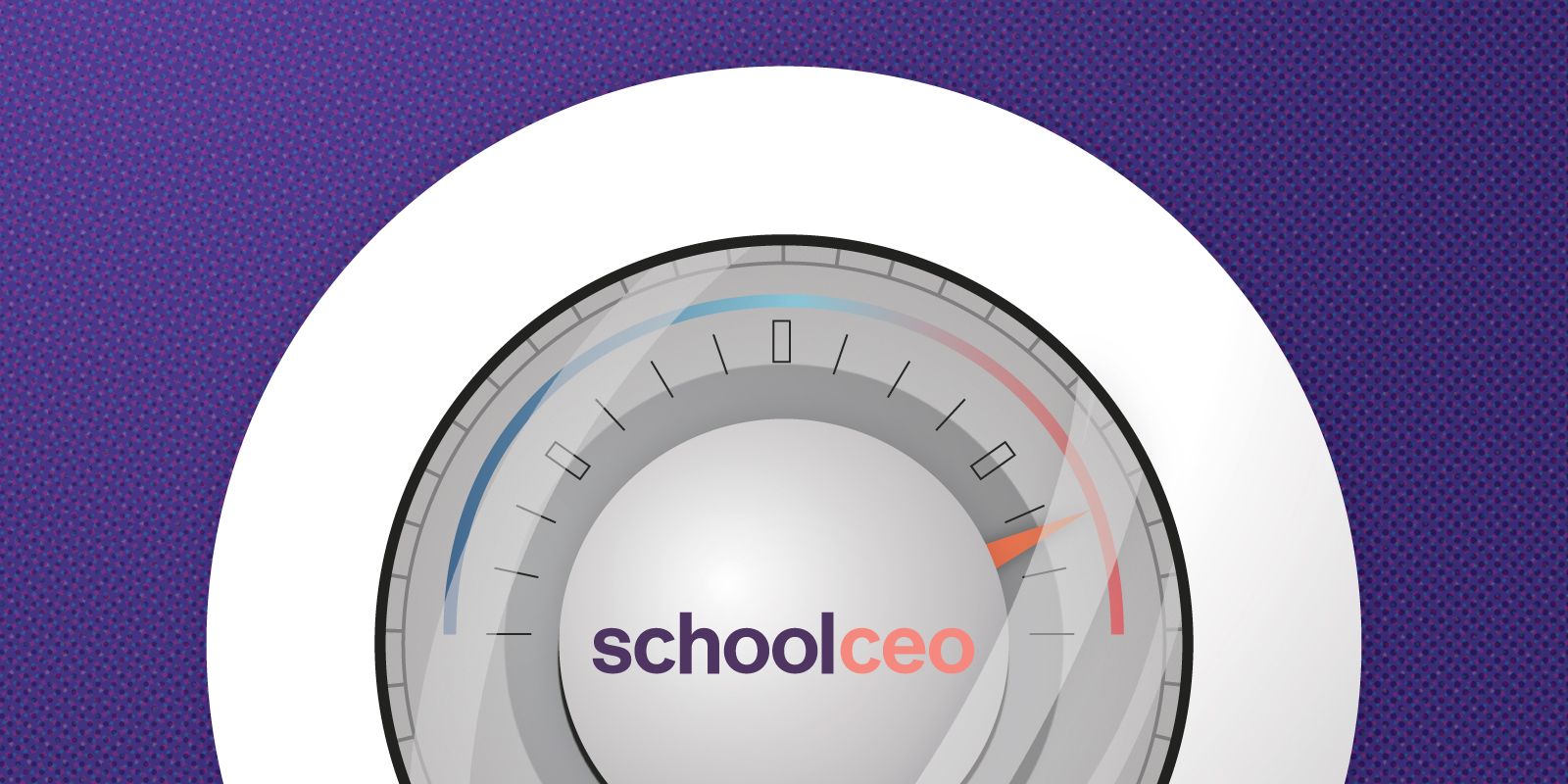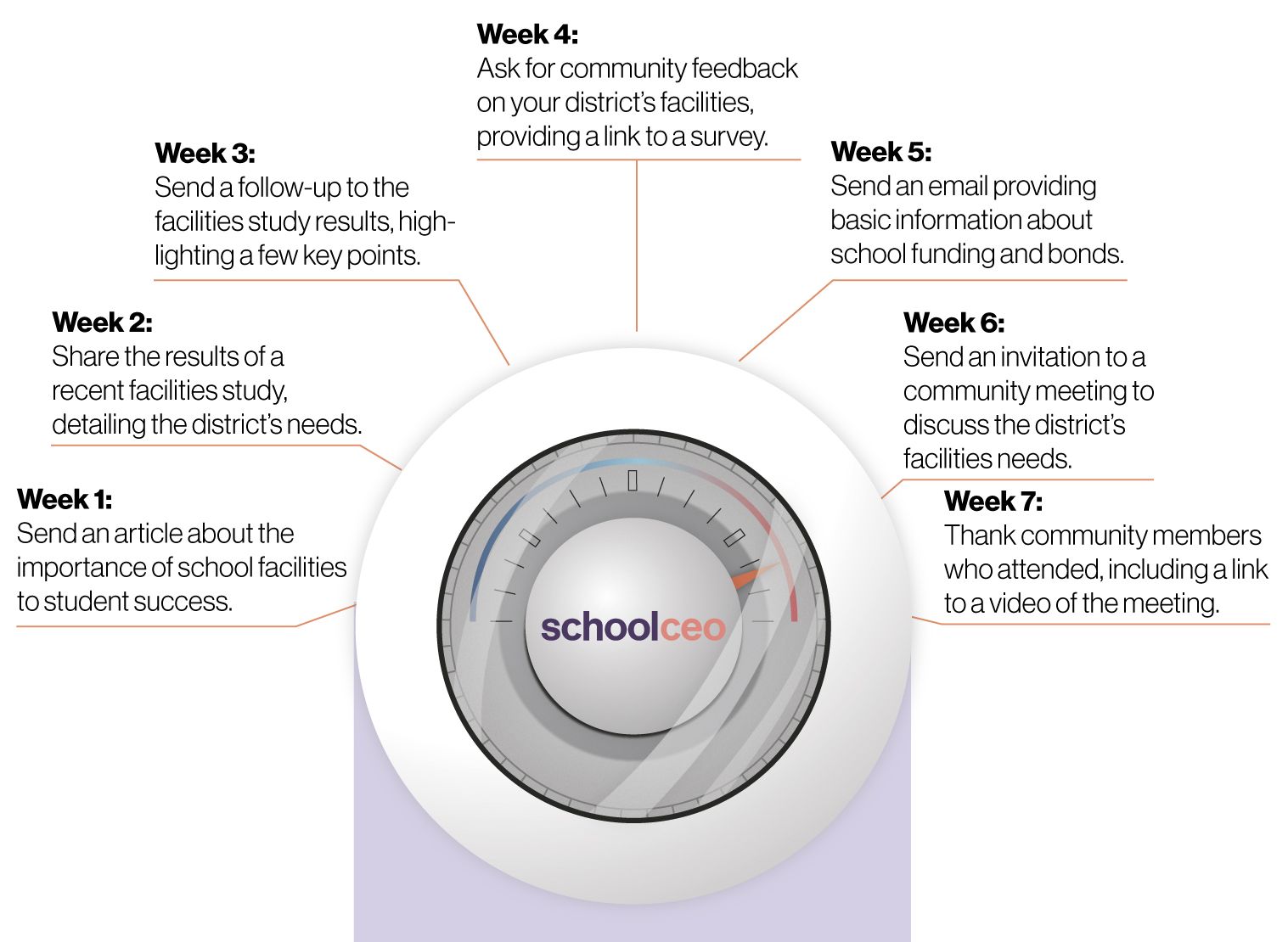Anatomy of a Drip Campaign
How to warm up your community to new ideas and initiatives

If you want to get married, you don’t start by asking a stranger to go to Vegas—but you might start by asking them on a date. Your prospective partner will want to get to know you, spend time with you, and figure out what you’re all about before making such a huge commitment. The more significant the ask, the longer this buildup will take. (We wouldn’t recommend proposing after the first date, either.)
It’s the same with any major proposal or policy change in your school system, including a bond measure. Before you get too fired up, you’ll need to lay the groundwork for your proposal—both in terms of ideas and relationships.
What is a drip campaign?
At its simplest, a drip campaign is a series of preset email messages designed to lead your audience toward a specific action. In the private sector, that end action is typically a sale, but in the context of schools, it might be advocacy in the community or a Yes vote on a bond measure. With a steady drip of relevant information, you’re tending to your audience as a gardener tends to his plants. You’re instilling the facts and ideas that will drive them to support you.
In the early days of email marketing, driving a targeted action was much simpler. Companies would buy a list of email addresses, then send the same sales email to everyone on that list. Only a small fraction of the recipients actually made a purchase, but regardless, marketers were reaching massive amounts of people at the same time, much quicker than snail mail or phone calls would have allowed.
However, over time, this strategy proved less effective. Inboxes got cluttered. People became annoyed at the barrage of unsolicited messages—so much so that they coined the term “spam.” Privacy laws made it necessary for customers to opt into receiving emails. Email marketers had to change.
Enter the drip campaign. Now, consumers have the power to determine whose emails they receive, opting into communications that interest them. And instead of a single sales email, marketers typically send a series of emails, slowly leading up to an ask.
You’ve almost certainly experienced this strategy yourself, even if you didn’t recognize it as a drip campaign at the time. When you sign up for a company’s newsletter, you get an email welcoming you to their list. In a week or so, you might receive an email linking to a relevant blog post. Another week—a discount coupon.
Finally, a month or more after you opt into receiving emails, the company goes in for the ask, overtly trying to sell you something. But by the time you receive that sales email, you’ve developed a relationship with the company. You’ve warmed up to them. You’re more willing to do what they ask.
And it really does work. According to research from email marketing platform Emma, links in drip emails are 119% more likely to get clicks, and relevant targeted emails produce 18 times more revenue than their more general equivalents.
We’ve all heard the old adage about boiling a frog. Throw a frog in a pot of boiling water, and he’ll jump out—but put him in some lukewarm water and turn up the heat slowly, and he won’t suspect a thing until it’s too late. That’s the basic principle behind a drip campaign. Throw your audience into your bond ask all at once, and they might jump out of the pot—but acclimate them slowly to the idea, and before they even realize what’s happened, they’ll be on your side.
How does this apply to schools?
As a school leader, you’re not trying to close a sale, but you’re often working to get your community on board with one district effort or another—in this particular case, a bond measure. With a drip campaign, you can begin planting the ideas behind your bond in your community’s minds long before they even know a vote is on the table. At the same time, you’re nurturing your community relationships.
As soon as you know what your bond measure will ask of the public, you can begin planning your drip. If you’re going out for a facilities bond, you might begin with a link to an article about the importance of environment to a child’s education. A little later, an update on the state of your current facilities, highlighting your most pressing needs. A week or two later, an announcement of the bond campaign, with info about its plans and expenditures. Finally, as the vote draws near, a message formally asking for support.
You’ll set up all these emails at the same time, ensuring that you’re threading your underlying needs throughout the campaign, but for your audience, the messages will be spaced out. They won’t seem pushy, and they may not even seem like marketing. But as if by osmosis, your community will be absorbing the ideas you want them to believe about your district and its needs—and by the time the vote comes, they’ll be primed for a Yes.

Drip Campaign Tips
Make it easy to opt in.
Setting up an email list for your drip campaign will be pretty easy for you as a school leader; more likely than not, you received permission to email your students and parents at the beginning of the school year. However, you’ll want to make it easy for other members of your community—people who don’t have kids in your schools—to opt into your emails as well.
This means you’ll need an email sign-up somewhere prominent on your site, probably right on the front page. You might even use a pop-up box encouraging visitors to sign up for your email list. (Just make sure it’s easy to dismiss.) Most of your voting base will be your students’ parents—but it doesn’t hurt to keep as much of your community informed as possible.
Personalize your content.
Remember, a drip campaign is largely about connection. If your community members don’t feel that your email content is relevant to them, they’ll become disengaged. Private sector marketers solve this problem by splitting their email lists into segments—then sending different content to each list.
For example, imagine you buy a mattress from an online retailer. If you get an email after that purchase trying to sell you a mattress, that content will be irrelevant to you. Plus, it will make you feel like the company doesn’t particularly care about you—they don’t even know you already bought a mattress from them.
That’s why most companies in the private sector will move a customer to a different segment of their list after a purchase. Instead of emails about buying a mattress, you’re more likely to get messages encouraging you to buy sheets or pillows.
Again, your school district’s drip campaign isn’t focused on sales, but you can still segment your lists to make sure your content is relevant to those receiving it. For example, you might separate lists by school, sharing updates about each individual facility. You might keep your outside community members in a different segment than your parents, students, and teachers, addressing their divergent concerns.
Finally, no matter the list, make sure the “From” field of your emails displays a person’s name—not a “reply-to” email address or even the name of your school district. Use your own name or the name of your advocacy committee’s head. Your audience is more likely to open a message that comes from a real person.
Automate your emails.
Because drip campaigns have proven to be so effective, a wide array of vendors, like Mailchimp and Constant Contact, sell products to automate drip email campaigns.* While each of these tools has slightly different features and setups, they all allow you to write your series of emails on the front end and send each one at the right time.
You can do this one of two ways. If you have an existing email list and you’re not planning to add people, you can set up a simple schedule, automatically sending your emails to the group at set dates. If you’ve got people actively signing up for your email list, you can also use your automation tool to begin sending the drip campaign the day they sign up. For example, if you are trying to reach parents who may be interested in enrolling their child in the district, you could include a simple “Get More Information” form on your website. These tools can then send a series of emails at any time interval you choose, starting from the sign-up date.
This automation allows you to “set and forget,” taking a lot of the legwork out of running a drip campaign.
Don’t overdo it.
Drip campaigns should slowly warm people to an idea—not crank up the heat all at once. You don’t want to scare your audience away (or worse, annoy them) by sending way too many emails. A survey by TechnologyAdvice indicated that 45.8% of people who marked businesses’ emails as spam did so because they came too frequently. (Irrelevant content accounted for another 31.6%.)
So what’s the right level of contact? When asked the maximum number of times they contacted an email address in a month, more than half of marketers answered between two and five, according to a study by the Data and Marketing Association. By contrast, only 14% answered more than eight. About once a week—or even every two weeks—seems to be the sweet spot.
So there you have it—everything you need to turn up the heat on a simple drip campaign. Now, go forth and boil some frogs.

SchoolCEO is free for K-12 school leaders. Subscribe below to stay connected with us!

